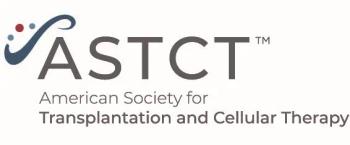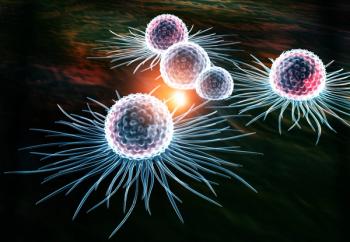
IV Pegylated Asparaginase May Be Better Option for Pediatric ALL
PEG-asparaginase had both similar safety and efficacy to intramuscular native E coli l-asparaginase for the treatment of children with ALL in complete remission.
Intravenous pegylated Escherichia coli asparaginase (PEG-asparaginase) had both similar safety and efficacy to intramuscular native E coli l-asparaginase for the treatment of children with acute lymphoblastic leukemia in complete remission, but was associated with less anxiety and could be administered in a more convenient schedule,
“Based on these advantages, we recommend the use of intravenous PEG-asparaginase in the frontline treatment of children and adolescents with acute lymphoblastic leukemia whenever feasible,” wrote Andrew E. Place, MD, of the Dana-Farber Cancer Institute, and colleagues in Lancet Oncology.
According to background information in the study, l-asparaginase is a mainstay of treatment of childhood acute lymphoblastic leukemia; however, the best dose, preparation, and administration of the substance is still unknown.
The Dana-Farber Cancer Institute Acute Lymphoblastic Leukemia Consortium Protocol 05-001 (DFCI 05-001) was designed to compare the toxicity and efficacy of intravenous PEG-asparaginase and intramuscular native E coli l-asparaginase.
“L-asparaginase is usually administered intramuscularly rather than intravenously because of concerns about the risk of anaphylaxis,” the researchers wrote. “Because most pediatric leukemia patients already have indwelling catheters, intravenous administration would be more convenient and less painful than intramuscular injection.”
The study enrolled 551 patients aged 1 to 18 with newly diagnosed acute lymphoblastic leukemia. All patients underwent induction therapy with intravenous PEG-asparaginase for 32 days. Those patients who achieved remission (n = 526) were then randomly assigned to 15 doses of intravenous PEG-asparaginase every 2 weeks (n = 232) or 30 doses of intramuscular native E Coli l-asparaginase weekly (n = 231).
The primary endpoint of the trial was frequency of toxicity. Results showed similar levels of overall toxicities between patients assigned PEG-asparaginase (28%) and those assigned native E coli l-asparaginase (26%). This was also true for individual toxicities of allergy, pancreatitis, or thrombotic or bleeding complications. The researchers did note, however, that the timing of allergic reactions differed between the two groups.
“Of the 28 hypersensitivity reactions recorded with post-induction intravenous PEG-asparaginase, 25 (89%) occurred at the first or second post-induction dose, and 14 (50%) of all reactions were grade 3 or 4,” the researchers wrote. “Of the 21 hypersensitivity reactions recorded with post-induction intramuscular native E coli l-asparaginase, two (10%) occurred at the first or second post-induction dose, and six (29%) of all the reactions were grade 3 (none was grade 4).”
No significant difference in 5-year disease-free survival was found between the two groups.
The researchers noted that previous studies have established that asparaginase activity levels of 0.1 IU/mL or higher result in optimum therapeutic effectiveness. In this analysis, the median nadir serum asparaginase activity and the proportion of patients achieving at least 0.1 IU/mL were significantly higher in patients assigned to intravenous PED-asparaginase compared with native E coli l-asparaginase.
Despite these similarities in toxicity and efficacy, the researchers found that patients assigned to intravenous PED-asparaginase had significantly less anxiety compared with patients assigned to the native E Coli l-asparaginase.
“The findings of this trial and of other recent studies reinforce the idea that intravenous PEG-asparaginase is the preparation that should be used in modern clinical trials commencing with the first planned exposure to the drug in the treatment schedule,” wrote Carmelo Rizzari, of University of Milano-Bicocca, MBBM Foundation, Italy, in an
Newsletter
Stay up to date on recent advances in the multidisciplinary approach to cancer.


















































































